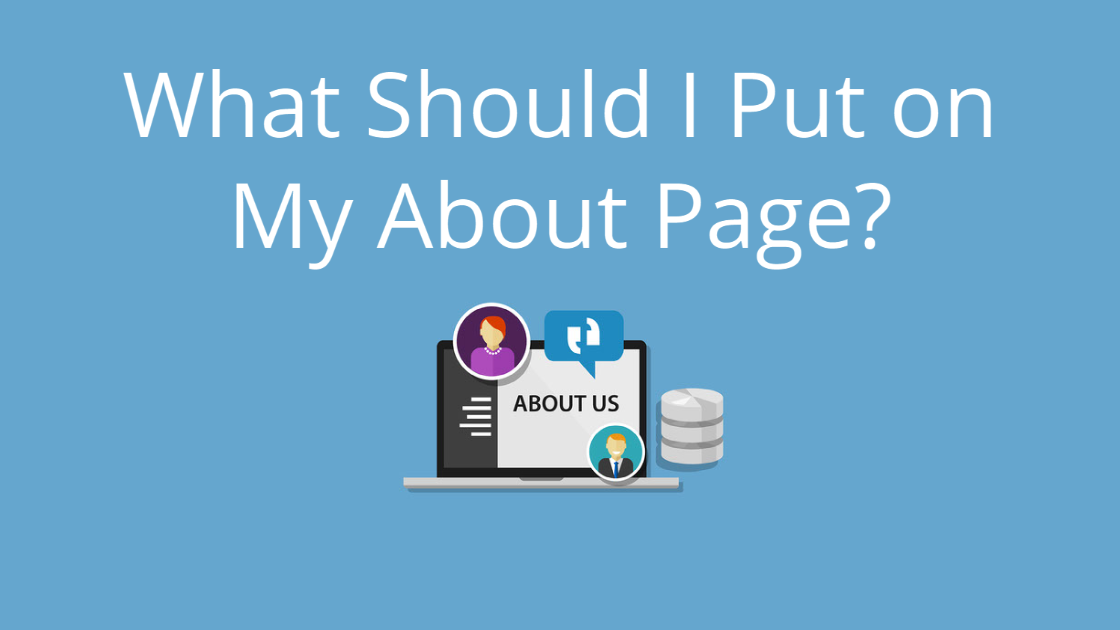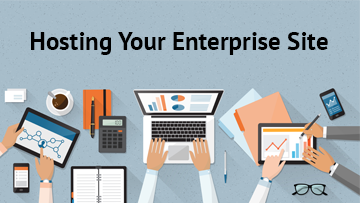What’s the Point of an About Page?
An About page gives readers the backstory to your website. Regardless of whether your website is for personal or business use, an about page can give website visitors a look behind the website. You can tell the story of how the website came to be or how you go to where you are today. You can talk about what your stand for, what your company stands for, and how your website aids in that goal. This page serves to orient visitors to your website’s purpose.
Thoughtfully crafted About pages can make your website more memorable, encourage brand awareness and loyalty, and make people more inclined to return to your website.
How does it accomplish this? Well, your About page makes your site more personable. If people like what your business stands for, they may return on principle or because they like you. You’re putting a “face” or story on your website, even if you don’t share an actual photo of your face.
So how do you create the best About page for your website? We’ll go over a few helpful tips below.
What Information Does an About Page Need?
An About page is the reader’s entrance to all the things that makes your business awesome. You know your business is a big deal, but you need to somehow communicate that to the readers.
Need help writing persuasively? Check out our guide: How to Write Persuasive Website Text
We put together a list of pertinent information to include on your About page. With this list, you’ll be able to jump start your About page creation process.
Information About You or Your Business
It’s natural to include the story behind your website. If your website is designed for your business, then include information about how your business came to be. If your website is devoted to growing your brand, you can share the journey you’ve undertaken to create the brand.
The exact information you include will depend on your website’s purpose. Generally, the About page is a place where you can loosen up a bit. Your story doesn’t have to be perfect. Instead, the About page shows that you’re a little human. If you’re running a corporate or business website, this is key.
Consider Your Audience
Now, while the About page is the perfect place to show your human element, it’s important to remember that it’s not all about you or your business. The About page concerns the readers, too.
If you want some of the benefits we listed above (brand awareness, loyalty, etc), then you need to share information that will appeal to your readers. This is an opportunity to subtly sell your business to them.
So take into consideration what your audience wants. Did you design your product to sell? Yes. But did you also design it to solve a certain problem? You can focus on that in your About page.
Likewise, consider how you’re communicating. Are you in a tricky technical field? If so, consider the terms you use. You don’t want to alienate your readers by using confusing technical jargon. Instead, use easy to understand terms where you can or explain the terms before using them. If you absolutely must use a technical term that is not widely known, and also don’t have the space to explain it succinctly, then we recommend linking the word to helpful supporting material.
Form Your Narrative
What you put on your About page will define how people think of you. Do you want to be seen as a new, up-and-coming company with ground breaking technology? Would you rather be seen as the tried-and-true, experienced choice? Want to be seen as the business who overcame hardship and grew even stronger?
How you frame yourself matters since it will inform how others think of you. The About page is the perfect place to fine-tune your messaging.
This page can also give your business more personality, so don’t be afraid to have fun with it. It should give readers an idea into your business’ culture.
What Site Elements About Pages Typically Include
Website design is subjective, so we can’t tell you a single, sure-fire formula. However, we have looked at an array of About pages, so we can tell you site elements that are typically used and work well.
Pictures
Images are one such element. Not only can they act as supplemental material, they also break up large chunks of text. This double-hitter makes them a popular site element to add.
People don’t want to feel like they’re wading through your business or personal story. So you can break up the text with fun or relevant images. These images can be anything from pictures of your business, business related items, or pictures of you and your team. Pictures of you or your team aren’t required though. You can also use images that are related to your brand. Just make sure the images fit whatever narrative you’re trying to push.
Easy-to-Read Text Blurbs
Making your text easy to read is imperative. Solid blocks of text are off-putting and will discourage people from reading. To increase your chances of imparting your brand’s story, make the text easy to skim.
There’s some science behind why you should make your website text skimmable. Read more about how users read on the internet here: How Users Read on the Web by Jakob Nielsen
So how do you make your About page skimmable? Images help, but large chunks of tiny text aren’t easy on the eye. So make sure you break your text up into short blurbs (usually around 2 – 3 sentences). Breaking your text into blocks like this makes it easier for the eye to skip through.
If you cater to the visitor’s method of reading, then you have a higher likelihood of keeping them on the page.
Headlines
Headlines are often used on About pages to help break up text and lead the eye. They also give helpful information about the contents of the section, so you can use headlines to give readers an idea of what you stand for even if they choose not to read the entire page.
When using headlines, be sure to be clear and concise. A full paragraph of header text is not a nice look. So be brief, but to the point.
If you are writing about your business, you can use headlines to concisely state your business goal and who you are. If one headline doesn’t cut it, you can also use subheadings to further explain before launching into the main body of your message.
For readers who skim, headlines and subheadings make their life much simpler. They can read a heading and, if the heading is interesting, they may choose to read the text under it. If the header isn’t interesting, they may skip to the next one.
This is why it’s critical that you use headlines that are clear, concise, and engaging.
Consider Adding Your About Pages to Main Navigation Menu
Lastly, including a link to your About page in your main navigation menu can help increase traffic and spread the message of your business.
Tip: If you have specific plans for your main navigation that don’t allow you to include the About page, then consider adding it to your footer instead.
The About page is only useful if your visitors can find it. So make sure it’s easy to find!
Building Website Pages
While these tips are a great place to start when building your own About page, website design is subjective. You may choose to use all, some, or none of these recommendations. However, if you found this helpful, you may want to check out our other page building guides:
Still in the planning phase? You can speed up your website building process by using a CMS. Check out our CMS offerings here:




